Handlooms fall silent as weavers see profits shrink
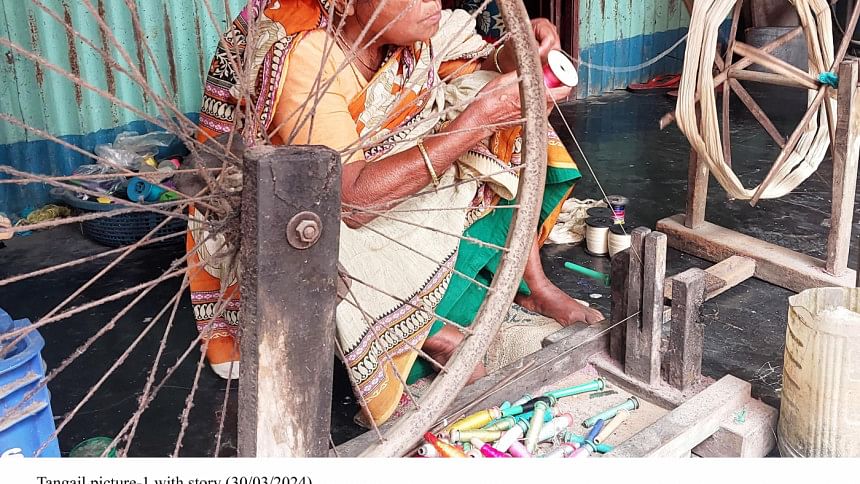
Persistent problems, such as the price hike of raw materials and reduced demand, are forcing many weavers in Tangail to leave their profession, with the number of handlooms and artisans rapidly decreasing and many fearing the 200-year-old tradition is nearing a point of no return.
Local weavers attribute this decline to increases in the price of raw materials and a lack of demand, which means they cannot even raise prices. Another big factor is that the local market is flooded with saris made in other countries.
Aarti Rani said that the rattling sound of handlooms could be heard day and night when she first arrived in the textile rich Tangail district after getting married to a local weaver.
Living in the Pathrail union, she was at one of the hubs for textile products, including the famous Tangail sari, manufactured through both handlooms and powerlooms.
For years after Rani first arrived as a newlywed, the income from weaving was good enough so she could pass the days happily.
But her children cannot say the same.
Another weaver from the same area, Gani Miah rued his fate. His family's expenses have increased manifold in the past years, but even if husband and wife work together, they struggle to make ends meet through weaving.
"But what else can we do? We do not know how to do any work other than weaving saris," Gani lamented.
He said women wore saris less these days, so neither the demand nor price has increased. At the same time, the price of weaving materials such as yarn and dye has increased.
Gani added that he did not want to continue living his life under the orders of Mahajans, who are local wealthy weavers and sari traders, and for meagre wages.
As small weavers are becoming disoriented due to continuous losses, many have already closed down.
According to the Kalihati and Sadar Basic Centres of Bangladesh Handloom Board in Tangail, there are currently around 32,000 handlooms under the centres. Of these, around 17,000 are in six upazilas under the Kalihati centre and 15,000 in six upazilas under the Sadar centre.
Mofakkharul Islam, president of Tangail Central Cooperative Artisans Society, said that there were around 1 lakh handlooms and 1.5 lakh weavers in the district in the 90s and at least three lakh people were engaged in the industry.
He said the overall number had dropped by more than two-thirds over the years.
"Local weavers are closing their businesses as it is no longer profitable enough to sustain. Most of the looms in the region will be shut down within a few years if this situation prevails," Mofakkhar, also former president of Kalihati Upazila Handloom Owners Association, said.
"The weaving industry needs government attention. The weavers need proper training and smooth supply of weaving materials at subsidised prices," he added.
Md Kamruzzaman, the liaison officer of the Kalihati Basic Centre, said it mainly trains weavers and provides loans. But weavers are unable to benefit due to increases in the price of weaving materials.
Noresh Basak and his five brothers weave sari in handlooms at Bajitpur, close to Tangail town. He said that he could make little profit despite efforts from all his family members, including women and children.
"An organised syndicate of merchants is responsible for increases in prices of yarn, dye and other materials," he alleged.
Nabakumar, another weaver from Bajitpur, said the market is flooded with saris from other countries and it is costing locals business. "A few years ago, there were over 3,000 handlooms in the Bajitpur area. Now there are only a few. The rest are closed," he added.
There is already a severe shortage of skilled craftsmen, but even talented ones are finding it hard to survive.
"How can we survive if there is no work all year? Only some work is done before Eid and Puja. It takes two days to make a sari, and the wages are Tk 500 for each sari. It adds up to around Tk 8,000 per month. Day labourers earn more than this," bemoaned craftsman Anjan Kumar of Bajitpur.
Rabiul Islam, liaison officer of Tangail Sadar Basic Centre, said there were many ways to boost the traditional industry. He said special training should be arranged to increase the quality of saris and recommended developing the region as a hub for saris.
Contacted, Debashish Nag, member (S&M) (joint secretary) of Bangladesh Handloom Board, said such dire scenarios were prevalent in weaving industries all over the country, not only in Tangail.
He added that the authority was working towards the betterment of the industry. "The Bangladesh Handloom Board is conducting research for the development of the traditional industry," he added.

 For all latest news, follow The Daily Star's Google News channel.
For all latest news, follow The Daily Star's Google News channel. 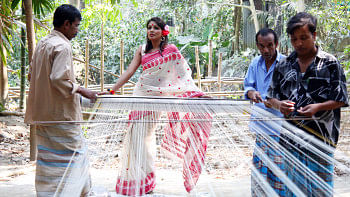




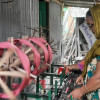
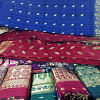
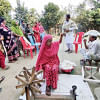


Comments